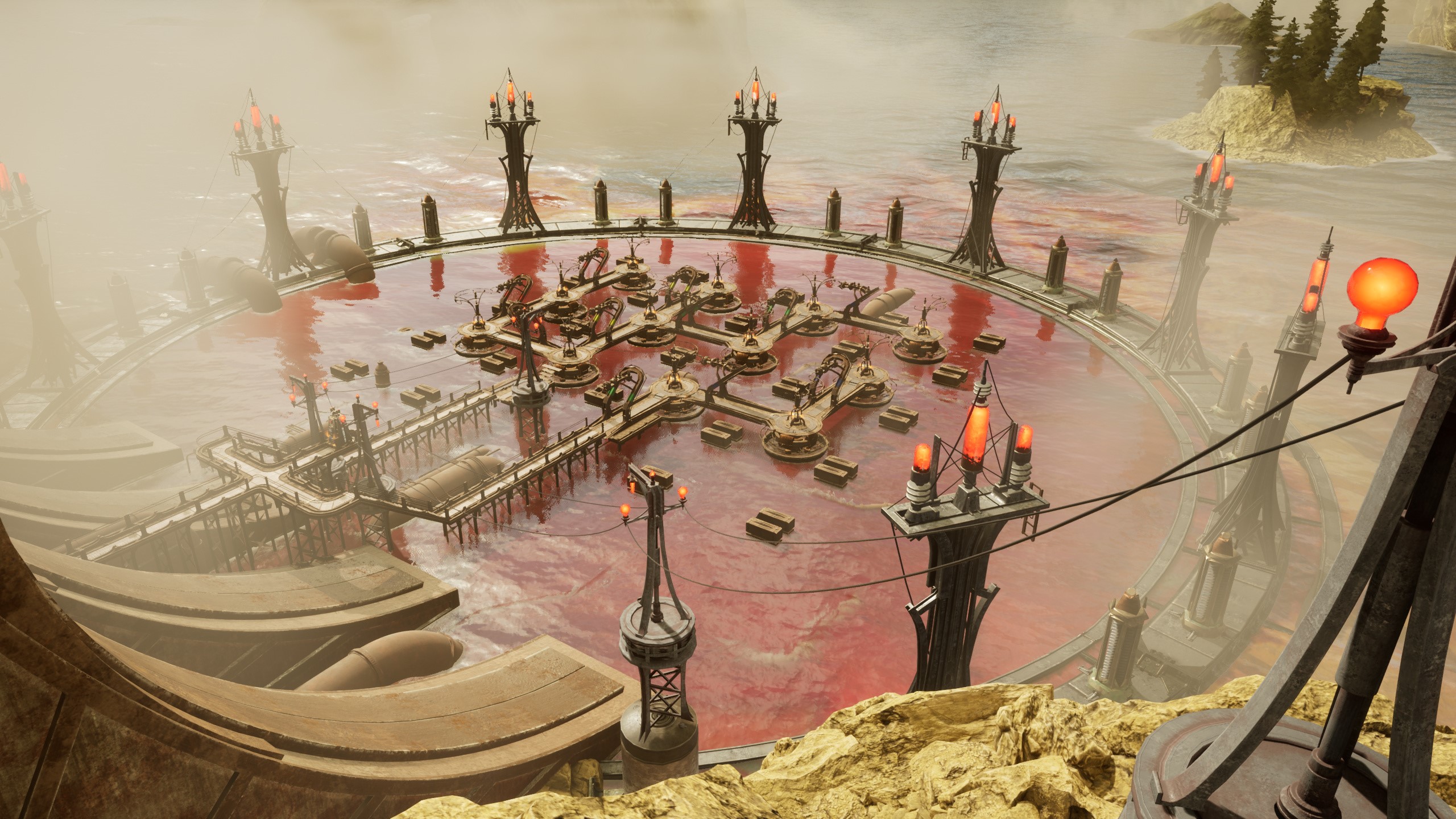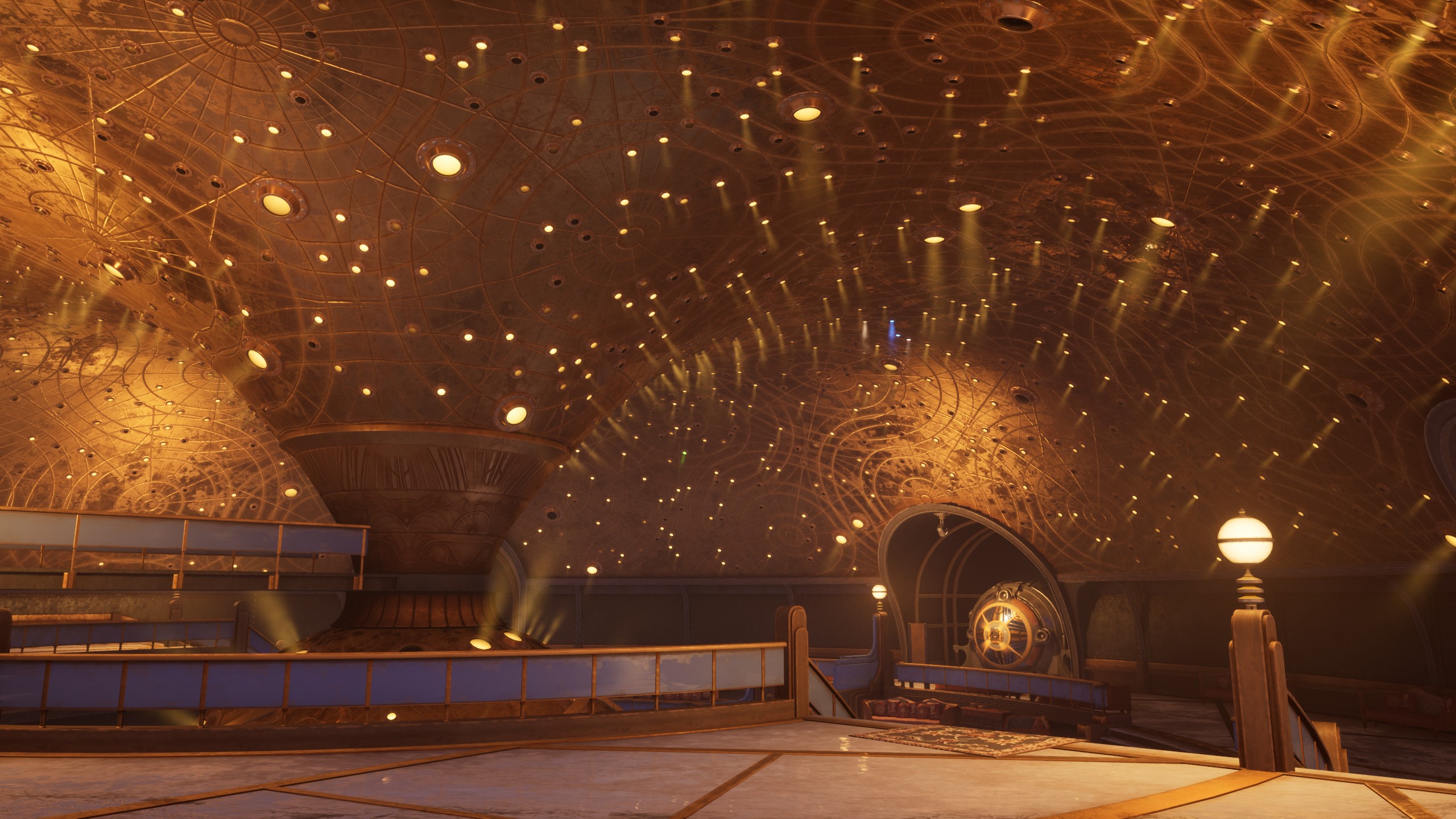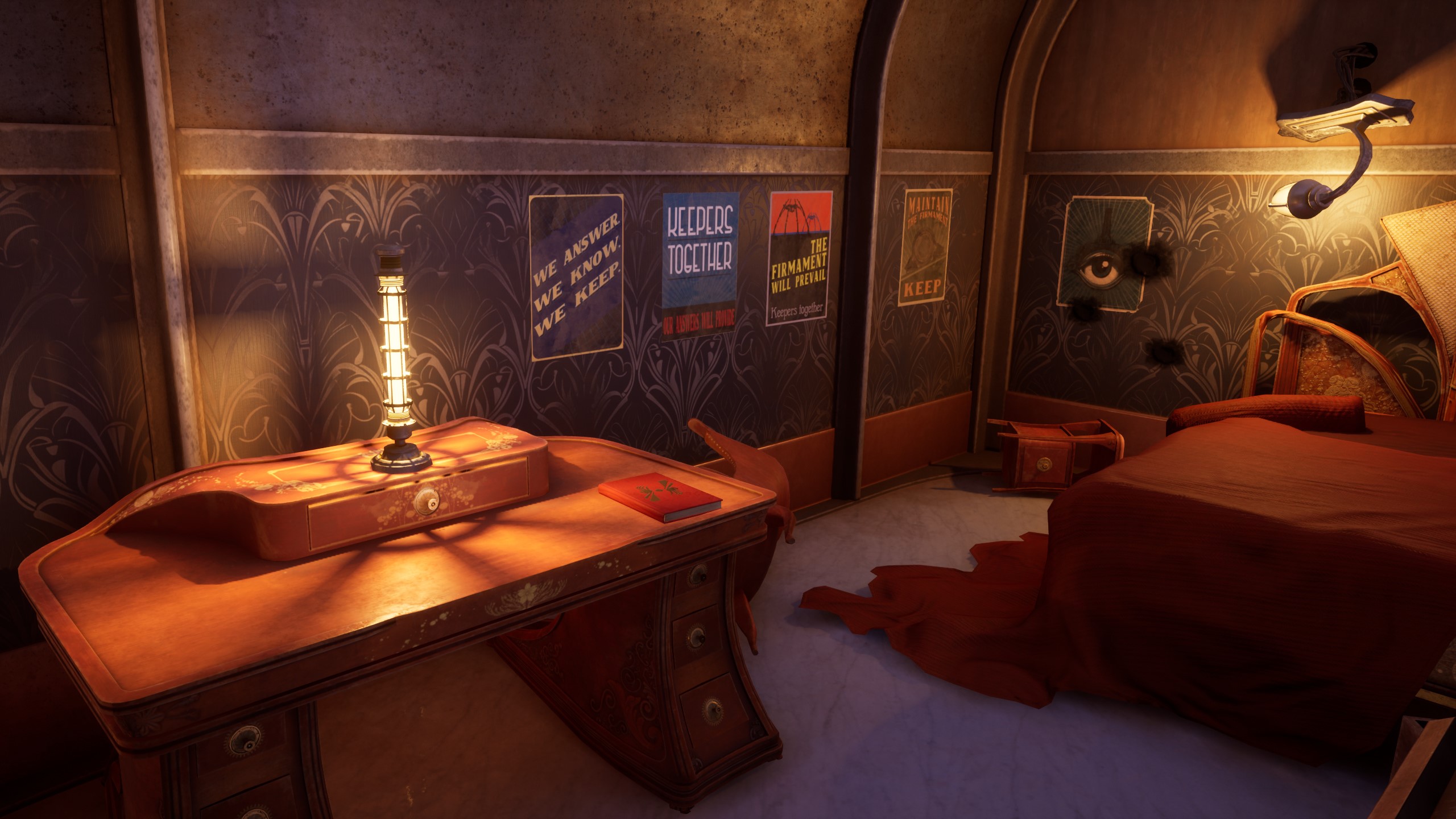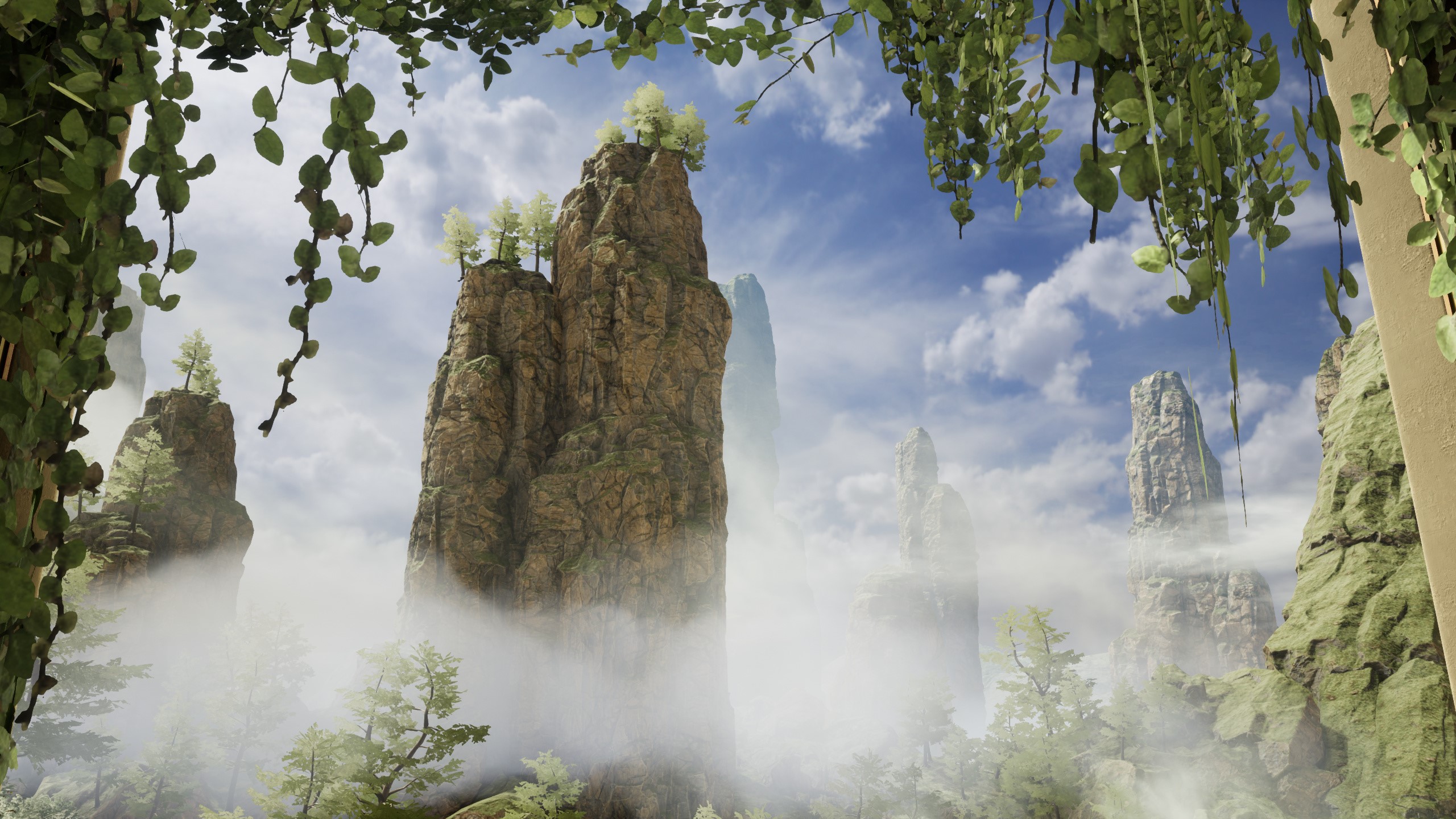Our Verdict
A graphically gorgeous descendant of Myst, paradoxically limited by its own ambitions.
PC Gamer's got your back
What is it? A first-person puzzle adventure from the makers of Myst.
Release date May 18, 2023
Expect to pay $35 / £29.50
Developer Cyan Worlds Inc
Publisher In-house
Reviewed on Nvidia 2080 Ti, Intel i9-9900k @ 4.9ghz, 32gb RAM
Multiplayer No
Steam Deck Verified
Link Official site
My brain has never quite agreed with how Cyan Worlds design their adventure games, primarily the iconic Myst series. Much as I’ve enjoyed exploring their strange puzzle-filled alien worlds, I still have flashbacks to fumbling around Teledhan in Uru: Ages Beyond Myst, wasting hours poking strange machines that were clearly doing something I couldn’t intuit. It was with some trepidation that I dove into Firmament, but what I got was an easy-going, graphically stunning adventure that could actually stand to be a little tougher.
Firmament is an easy place for Cyan newbies to start. While thematically similar to the Myst series (a lonely puzzle adventure through a series of otherworldly environments), Firmament has its own setting and canon, although you’ll be left in the dark on the specifics until its final sequences. You’ve woken up in a plush steampunk sarcophagus, and a wistful-sounding French ghost lady says you’re a "Keeper of the Realms".
Sounds like a lot of pressure, but it's actually a pretty chill job. Le ghost says you’ll need to find your way around with the help of the Adjunct, a chunky extendable gauntlet that acts as nearly your sole method of interacting with the worlds as you wander.
They’re gorgeous worlds at that. As with Myst, it set me loose on a central hub area and three miniature "realms": Curievale and its colossal ice quarry; Juleston and its lake-sized acid batteries fueled by sulfur mines; and my personal favorite, the lush, overgrown St. Andrew. Each environment feels like a single art-deco/steampunk megastructure nestled into nature, packed with machines all working towards a single end goal. They’re stunning and evocative, metallic monuments to erudition and industry.
As is my experience of Cyan’s adventures, my ghostly mentor wasn’t much help on the puzzle-solving front, but she occasionally chipped in with commentary on the environments and her personal laments while carefully avoiding explicit exposition. An excellent voice performance made me glad to have her along for the ride. Firmament is a game carried more by vibes than narrative, and it’s easy to focus on those as her narration was just about the only human voice heard in the whole journey. The wind, thundering machinery, and brooding, ominous synth soundtrack are your only other companions.

It’s never a mystery as to when it's puzzle time: there’s no inventory management or pixel hunting in Firmament, just manipulating big steampunk machines with the Adjunct gauntlet. Point it towards anything interactive (clockwork sockets highlighted with blue paint) to tether your extending laser-cable to it, then start fiddling. Each machine is controlled simply by twisting your Adjunct left or right (physically in VR, or Q & E on desktop) to control one linear function, whether it’s a door opening and closing, elevator rising or falling or something more esoteric.
More complex machines let you pick additional interactions with the mousewheel. The interface on a huge quarry crane lets you cycle between three modes; moving the arm forward/back, up/down, and extending/retracting the grabber, all done with just two buttons and the mousewheel. Simple and intuitive, complicated only by a couple of unlockable abilities given at the midpoint of each of the three realms. One extends the range of the Adjunct, one lets you bounce your interface to targets out of direct reach, and one unlocks a handful of heavy-duty locks found later on.

I puzzled my way through the entire adventure in a little under 10 hours with only a couple snags. One of Cyan’s stated goals with Firmament was to create a grounded, coherent setting, and it succeeded maybe too well. Every machine feels like it could be a real device and has a logical purpose tying into the overarching quest. Intuitive, but limiting for puzzles.
The Witness never had to give plausible mechanical context to its line-drawing challenges, and Resident Evil’s bizarre puzzle mechanisms are handwaved as being the work of eccentric architects and mad scientists. Firmament has no such excuse to fall back on. For the first time ever, I wished that a point-and-click adventure’s puzzles had been more complicated and obtuse. A couple were genuine brain-teasers (like one involving connecting circuit terminals in a giant acid-bath battery assembly, and another involving navigating a multi-car train through horizontal and vertical space), but several felt perfunctory, just using my Adjunct to chain together the right contact points within a single room. The puzzles I enjoyed least were three-dimensional scavenger hunts where the solution was simple, but required wiggling around to get the right line-of-sight to the next interaction point in some awkward spot.

Those puzzles feel a little more intuitive in VR mode, another area where Firmament's laudable ambitions fall a little short of their potential. Even at lower graphics settings, Firmament’s realms are gorgeous to behold and explore, and the sheer scale of the structures becomes all the clearer in VR. The Adjunct also feels a little more natural as a VR control method, pointing and clicking on distant devices and interacting with a single button press or a twist of the wrist, without requiring too much precision.
Firmament's VR-friendly design also makes it deathly still. The only physically moveable objects I found were a handful of books (which would clip through tables easily in VR), making it feel like a pre-rendered backdrop at times. It fits the lineage, but not so much the gauntlet that exists purely to interact with the world.

I sometimes came to a jarring stop while walking around, looking down to find a gap of just an inch or two preventing my progress. Other times my character would easily step across a similar crack. Some puzzles let me attach my Adjunct through solid walls, and the acid-battery puzzle allows its rotating bridges to clip through each other in particularly ugly fashion. I only mention these blemishes because they’re distracting flaws in an otherwise stellar presentation. Firmament’s Realms are picturesque and eminently screenshot-friendly.
I enjoyed my time with Firmament, perhaps more as a work of otherworldly tourism than a challenging puzzle game. Between a thinly spread story and only a handful of genuinely juicy puzzles, it relied on its environments and atmosphere to hold my attention, and it absolutely did. But outside of the imagery and scope of its megalithic sci-fi structures, I don’t think Firmament leaves much of an impact. It's a nice stroll, but no one's going to be making a sequel to Pyst off the back of it.
A graphically gorgeous descendant of Myst, paradoxically limited by its own ambitions.

The product of a wasted youth, wasted prime and getting into wasted middle age, Dominic Tarason is a freelance writer, occasional indie PR guy and professional techno-hermit seen in many strange corners of the internet and seldom in reality. Based deep in the Welsh hinterlands where no food delivery dares to go, videogames provide a gritty, realistic escape from the idyllic views and fresh country air. If you're looking for something new and potentially very weird to play, feel free to poke him on Twitter. He's almost sociable, most of the time.


